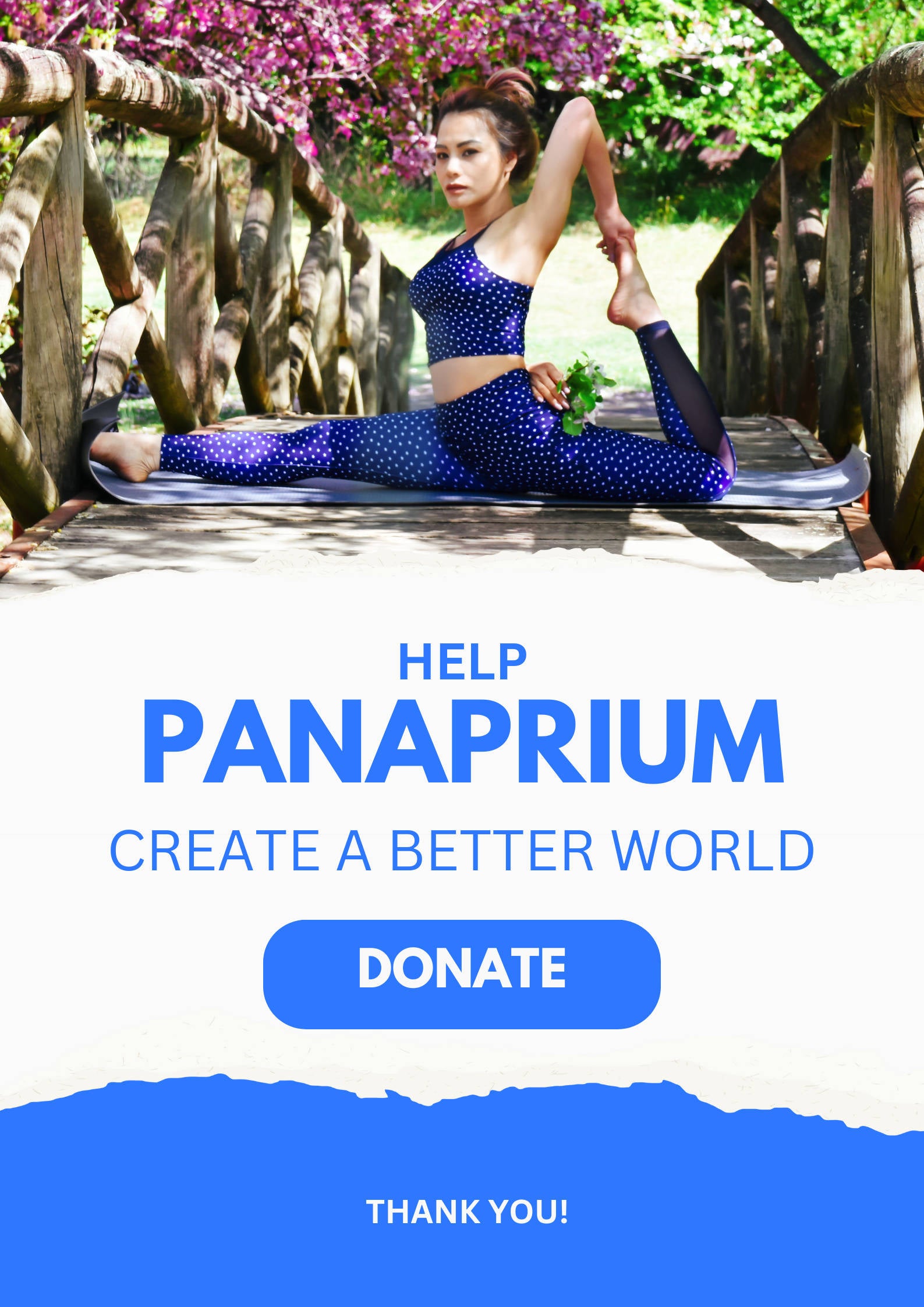
Schamanische Heilung erfreut sich im Westen zunehmender Beliebtheit und zieht Menschen an, die spirituelle Erkenntnisse, emotionale Heilung und eine Alternative zur Schulmedizin suchen. Doch mit dem Einzug dieser alten Praxis in den Mainstream tauchen Fragen nach ihrer Sicherheit auf. Ist schamanische Heilung gefährlich? Oder wird sie einfach nur missverstanden?
Die Antwort ist differenziert. Schamanische Heilung kann zwar tiefgreifende Vorteile bieten, birgt aber auch gewisse Risiken – insbesondere, wenn sie missverstanden, missbraucht oder ohne entsprechende Ausbildung oder kulturellen Kontext praktiziert wird. Dieser Artikel untersucht die potenziellen Gefahren schamanischer Heilung, was sie sicher oder unsicher macht und wie man verantwortungsvoll damit umgeht.
Was ist schamanische Heilung?
Schamanische Heilung ist eine spirituelle und energetische Heilmethode, die in alten indigenen Traditionen verwurzelt ist. Sie basiert auf der Überzeugung, dass Krankheiten ihren Ursprung im spirituellen oder energetischen Bereich haben und Heilung die Behandlung der zugrunde liegenden spirituellen Ungleichgewichte erfordert.
Schamanen – traditionelle Heiler, Seher oder spirituelle Führer – begeben sich in veränderte Bewusstseinszustände, um in die Geisterwelt zu reisen. Dort kommunizieren sie mit Geistführern, Vorfahren oder Naturgeistern, um:
-
Verlorene Seelenteile zurückholen (Seelenrückholung)
-
Entfernen negativer Energien oder spiritueller Eindringlinge (Extraktion)
-
Erhalten Sie Anleitung oder Heilung für den Patienten
-
Führen Sie Zeremonien durch, um das Gleichgewicht wiederherzustellen
Diese Methoden werden in Kulturen auf der ganzen Welt praktiziert, vom Amazonas-Regenwald bis zur Mongolei, Sibirien und Afrika.
Warum sich Menschen der schamanischen Heilung zuwenden
Viele Menschen fühlen sich aus emotionalen oder spirituellen Gründen zur schamanischen Heilung hingezogen, insbesondere wenn die Schulmedizin die Ursache des Leidens nicht bekämpft. Häufige Gründe sind:
-
Trauma oder emotionaler Schmerz
-
Sich getrennt oder „verloren“ fühlen
-
Chronische Krankheit ohne medizinische Erklärung
-
Spirituelles Erwachen oder Krise
-
Wunsch nach persönlichem Wachstum oder Klarheit
Der Fokus auf Energie, Geist und Ganzheit macht schamanische Heilung für diejenigen attraktiv, die Gesundheit ganzheitlich betrachten.
Ist es gefährlich?
Schamanische Heilung ist nicht grundsätzlich gefährlich. Wenn sie von einem gut ausgebildeten, ethischen Schamanen in einem angemessenen kulturellen und spirituellen Kontext praktiziert wird, kann sie tiefgreifende Heilung bewirken. Es gibt jedoch bestimmte Risiken, die zu beachten sind:
Panaprium ist unabhängig und wird vom Leser unterstützt. Wenn Sie über unseren Link etwas kaufen, erhalten wir möglicherweise eine Provision. Wenn Sie können, unterstützen Sie uns bitte monatlich. Die Einrichtung dauert weniger als eine Minute und Sie werden jeden Monat einen großen Beitrag leisten. Danke schön!
1. Psychologisches Risiko: Auslösendes oder unverarbeitetes Trauma
Eines der größten Risiken der schamanischen Heilung ist die Möglichkeit, Traumata erneut zu lösen. Techniken wie Seelenrückholung oder tiefes Reisen können vergrabene emotionale Wunden freilegen. Werden diese nicht richtig verarbeitet oder im Nachhinein nicht unterstützt, kann es zu folgenden Erfahrungen kommen:
-
Emotionale Überwältigung
-
Dissoziation
-
Rückblenden
-
Angst oder Depression
Ausgebildete indigene Schamanen sind typischerweise in einen Gemeinschaftskontext eingebunden und bieten langfristige Unterstützung. In westlichen Umgebungen erfolgt die Heilung oft isoliert, ohne angemessene Nachsorge oder psychologische Integration.
Lösung: Arbeiten Sie mit jemandem zusammen, der in traumainformierter Pflege geschult ist, und stellen Sie sicher, dass nach der Sitzung ein Unterstützungssystem vorhanden ist.
2. Körperliche Gefahr: Verwendung pflanzlicher Arzneimittel
In manchen Traditionen – insbesondere im Amazonasgebiet – werden pflanzliche Heilmittel wie Ayahuasca , Peyote oder Iboga verwendet, um Visionen und heilende Erfahrungen hervorzurufen. Diese können zwar transformierend wirken, bergen aber auch Risiken:
-
Übelkeit, Erbrechen oder Dehydration
-
Gefährliche Wechselwirkungen mit anderen Medikamenten (insbesondere mit Antidepressiva)
-
Psychische Belastung oder Psychose
-
Herzrisiken (insbesondere bei Iboga)
Unregulierte Ayahuasca-Zeremonien, insbesondere in „Touristen-Retreats“, die von unqualifizierten Praktizierenden geleitet werden, haben zu Krankenhausaufenthalten und sogar Todesfällen geführt.
Lösung: Nehmen Sie an Pflanzenmedizinzeremonien nur mit erfahrenen, seriösen Führern in sicheren, legalen und medizinisch überwachten Umgebungen teil.
3. Spirituelles Risiko: Missbrauch von Macht oder Energie
Schamanismus beschäftigt sich mit unsichtbaren Kräften, die heilend wirken können – oder bei Missbrauch schädlich. Zu den Risiken gehören:
-
Sich unerwünschten spirituellen Einflüssen öffnen
-
Empfangen von Energie von nicht vertrauenswürdigen Praktikern
-
Teilnahme an Ritualen, die man nicht versteht oder auf die man nicht vorbereitet ist
In traditionellen Gesellschaften absolvieren Schamanen eine lange Ausbildung, um zu lernen, wie sie sich sicher in spirituellen Welten bewegen können. In modernen Kontexten fehlt selbsternannten Schamanen diese Tiefe möglicherweise.
Lösung: Wählen Sie Praktiker, die gut ausgebildet, fundiert und respektvoll gegenüber der spirituellen Ethik sind. Vermeiden Sie Personen, die Wunder versprechen, Angst schüren oder zur Teilnahme drängen.
4. Kulturelle Aneignung und Mangel an Authentizität
Eine weitere Gefahr ist kultureller Natur. Verwestlichte oder „neoschamanische“ Praktiken entfernen Rituale oft von ihren ursprünglichen Wurzeln. Dies kann zu Folgendem führen:
-
Missbrauch oder Verzerrung heiliger Rituale
-
Schädliche Stereotypen oder Respektlosigkeit gegenüber einheimischen Kulturen
-
Oberflächliche Praktiken ohne Grundlage in der tatsächlichen Tradition
Schlimmer noch: Manche selbsternannte Schamanen nutzen heilige Traditionen aus Profitgründen aus und ignorieren dabei die Tiefe und den Kontext, die für eine sichere Heilung erforderlich sind.
Lösung: Informieren Sie sich über die Ursprünge dieser Praktiken. Unterstützen Sie einheimische Heiler oder solche, die in diesen Traditionen mit Integrität ausgebildet wurden.
5. Verzögerte medizinische Behandlung
Manche Menschen lehnen die Schulmedizin ab und bevorzugen ausschließlich spirituelle Heilung. Dies kann gefährlich werden, wenn schamanische Heilung anstelle einer notwendigen medizinischen Behandlung angewendet wird.
Zum Beispiel:
-
Ignorieren von Infektionen oder Tumoren
-
Der Versuch, schwere psychiatrische Störungen ausschließlich durch Rituale zu behandeln
-
Sich auf Geister verlassen, anstatt Notfallversorgung zu suchen
Lösung: Nutzen Sie schamanische Heilung als Ergänzung , nicht als Ersatz. Ganzheitliche Gesundheit umfasst sowohl spirituelle als auch medizinische Unterstützung.
Wann schamanische Heilung hilfreich sein kann
Bei verantwortungsvoller Anwendung kann schamanische Heilung große Vorteile bieten:
-
Tiefe emotionale Befreiung
-
Verbindung zu einem Zweck oder Geist
-
Auflösung langjähriger energetischer Ungleichgewichte
-
Ein Gefühl von Ermächtigung und Klarheit
-
Erneuerte Verbindung zur Natur und zu sich selbst
Viele berichten von bahnbrechenden Veränderungen, insbesondere wenn die Heilung durch Therapie, Meditation, Tagebuchschreiben und Unterstützung durch die Gemeinschaft ergänzt wird.
So schützen Sie sich: Best Practices
Wenn Sie schamanische Heilung in Erwägung ziehen, treffen Sie die folgenden Vorsichtsmaßnahmen, um eine sichere und wohltuende Erfahrung zu gewährleisten:
1. Recherchieren Sie den Arzt
-
Fragen Sie nach ihrer Ausbildung, Herkunft und Erfahrung.
-
Suchen Sie nach jemandem, der geerdet, ethisch und mit Traumata vertraut ist.
-
Vermeiden Sie Personen, die extreme Behauptungen aufstellen oder Geheimhaltung oder hohe Geldsummen verlangen.
2. Verstehen Sie den Prozess
-
Fragen Sie, welche Techniken verwendet werden (z. B. Reisen, Seelenrückholung, Pflanzenmedizin).
-
Erfahren Sie, was Sie erwartet und welche Integrationsunterstützung anschließend verfügbar ist.
3. Beginnen Sie langsam
-
Beginnen Sie mit einer einfachen Sitzung wie einer geführten Reise oder einer Energiereinigung.
-
Vermeiden Sie intensive Zeremonien oder Pflanzenheilmittel, bis Sie sicher sind, dass Sie bereit sind.
4. Integrationsunterstützung in Betracht ziehen
-
Arbeiten Sie nach der Sitzung mit einem Therapeuten, spirituellen Mentor oder einer Selbsthilfegruppe zusammen.
-
Tagebuchschreiben, Ruhe und Nachdenken können dabei helfen, die Erfahrung zu erden.
5. Kennen Sie die Warnsignale
-
Praktizierende, die behaupten, der einzige wahre Heiler zu sein
-
Jeder, der von medizinischer Versorgung oder anderen Meinungen abrät
-
Zwanghaftes, sektenartiges Verhalten
Fallstudien: Wann es klappt und wann nicht
Positives Beispiel:
Emma, eine Traumaüberlebende, arbeitete sechs Monate lang mit einem ausgebildeten Schamanen. Durch Reisen, Seelenrückholung und die sorgfältige Integration mit einem Traumatherapeuten berichtete sie von deutlichen Verbesserungen ihrer emotionalen Regulierung und ihres spirituellen Friedens.
Negativbeispiel:
John reiste für ein Ayahuasca-Retreat nach Südamerika. Der Schamane hatte keine Lizenz und verabreichte hohe Dosen. John erlitt eine Psychose und musste ins Krankenhaus. Er hatte danach keine Unterstützung und entwickelte infolge der Erfahrung eine posttraumatische Belastungsstörung.
Diese Geschichten aus dem wahren Leben zeigen sowohl das Potenzial als auch die Fallstricke.
Abschließende Gedanken: Ist es das Risiko wert?
Schamanische Heilung ist nicht grundsätzlich gefährlich , erfordert aber Sorgfalt, Urteilsvermögen und Respekt. Wie jedes mächtige Werkzeug kann sie je nach Anwendung heilen oder schaden.
Gehen Sie es mit:
-
Offenheit , aber auch Skepsis
-
Respekt vor den kulturellen Wurzeln
-
Engagement für persönliches Wachstum und Verantwortung
Wenn Sie Ihre Hausaufgaben machen, den richtigen Führer wählen und die Erfahrung bewusst integrieren, kann die schamanische Heilung ein wichtiger Verbündeter auf Ihrem Weg zur Ganzheit sein.
Quellen und weiterführende Literatur:
-
Michael Harner, Der Weg des Schamanen
-
Sandra Ingerman, Seelenrückholung: Das fragmentierte Selbst heilen
-
Eduardo Luna & Pablo Amaringo, Ayahuasca Visions
-
Rachel Harris, Ayahuasca hören
-
MAPS.org über Psychedelika und Integration
-
National Institute of Mental Health (NIMH) zur traumainformierten Versorgung
War dieser Artikel hilfreich für Sie? Bitte teilen Sie uns in den Kommentaren unten mit, was Ihnen gefallen oder nicht gefallen hat.
About the Author: Alex Assoune
Wogegen Wir Kämpfen
Weltweit-Konzerne produzieren in den ärmsten Ländern im Übermaß billige Produkte.
Fabriken mit Sweatshop-ähnlichen Bedingungen, die die Arbeiter unterbezahlt.
Medienkonglomerate, die unethische, nicht nachhaltige Produkte bewerben.
Schlechte Akteure fördern durch unbewusstes Verhalten den übermäßigen Konsum.
- - - -
Zum Glück haben wir unsere Unterstützer, darunter auch Sie.
Panaprium wird von Lesern wie Ihnen finanziert, die sich unserer Mission anschließen möchten, die Welt völlig umweltfreundlich zu gestalten.
Wenn Sie können, unterstützen Sie uns bitte monatlich. Die Einrichtung dauert weniger als eine Minute und Sie werden jeden Monat einen großen Beitrag leisten. Danke schön.































0 Kommentare